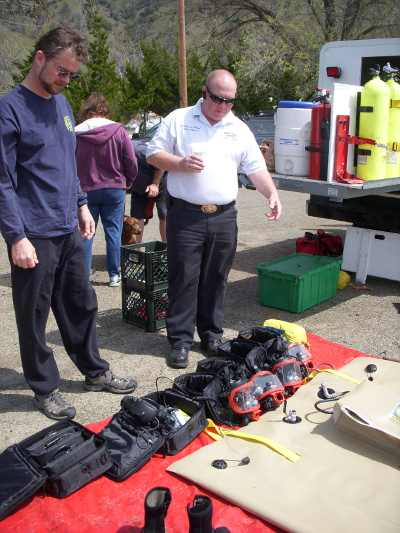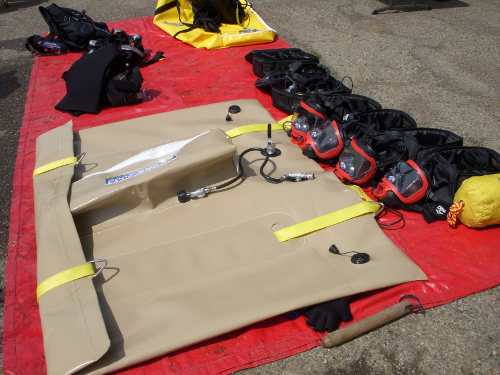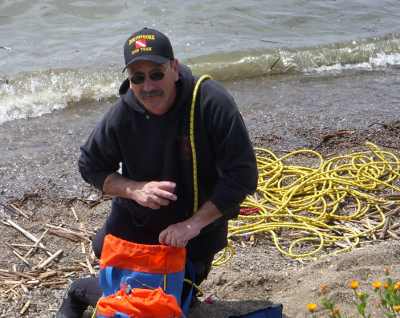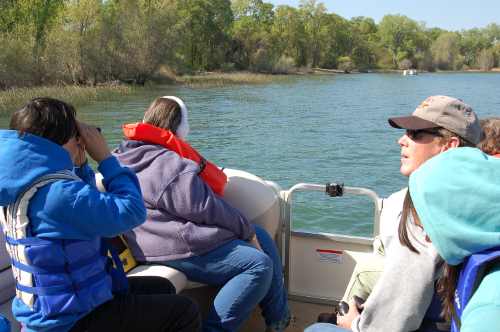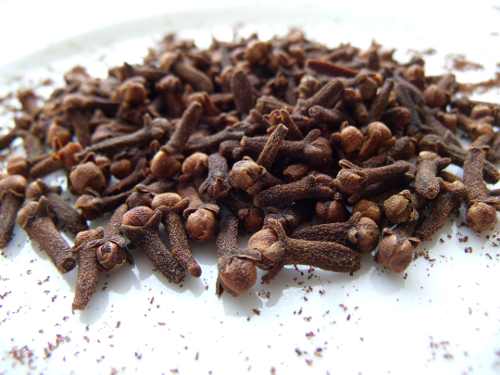
I conducted a little survey on Facebook recently.
Since two major holidays are celebrated this time of year – Easter and Passover – I asked which fruit, veggie, nut, grain, herb or spice comes to mind when they think of the holiday they celebrate.
Of the dozens of varied answers, three people mentioned cloves.
Readers who cook a traditional Easter ham today will have homes smelling deliciously of clove if they’ve studded the meat with this powerful spice.
Other than eyesight, smell is arguably the most powerful human sense.
A whiff of a passing fragrance can evoke strong memories from the past, and cloves, with their strong and pleasant scent, are no doubt responsible for many.
Cloves are the dried buds of an evergreen tree native to the Maluku (formerly Spice) Islands of Indonesia.
The immature flowers begin light pink in color and later turn bright red, which is when they’re harvested.
The name derives from a Latin word, clavus, meaning nail. The buds do resemble small, irregularly shaped nails, and the stem end is sharp enough to pierce meat and the flesh of fruit.
Cloves were highly prized in Roman times, and there are records from ancient China indicating that courtiers placed cloves in their mouths when addressing the emperor so as not to offend him with their breath.
This spice is beloved around the world and has been part of the cuisine of many a nation since ancient times.
Cloves are popular as a flavoring in the cuisines of both northern and southern India. There are dozens, if not hundreds, of recipes for the northern Indian spice blend, garam masala, but cloves will nearly always be a component.
Dried cloves are a key ingredient in masala chai, a spiced Indian tea that was the inspiration for the chai tea sold in the U.S., which also contains cloves.
In Vietnamese cuisine, cloves often are used to flavor the broth of Pho, a noodle dish.
In Mexico, cloves are most often used in combination with cinnamon and cumin to season savory dishes.
Because the Dutch at one time controlled the Indonesian spice trade, cloves are used in the Netherlands on a widespread basis, including in cheese and traditional stews and to flavor speculoos, a shortcrust biscuit traditionally served at Christmas.
In Europe and the U.S., cloves are perhaps most often used in sweet foods, such as gingerbread or pumpkin pie.
Chinese five-spice powder, the only spice blend used in China, is a combination of cloves, cinnamon, fennel, star anise and Szechuan pepper.
A variety of other spice blends rely on cloves, such as quatre epice (four spices in French), which contains white peppercorns, nutmeg and ginger in addition to cloves.
Quartre epice is used to flavor charcuterie such as sausages or terrines, or to add peppery spice to beef stews cooked with red wine. A sweet version contains allspice in place of peppercorns and is used in rich cakes and puddings.
Cloves add flavor to bean and lentil dishes, pickled beets, pork roasts, cranberry sauce, mulled cider or wine, chutney, and a variety of other foods.
They pack a strong flavor punch, so it’s not necessary to use many when cooking, whether in whole or powdered form. A few whole cloves or a pinch of powder will usually do the trick. The longer they stand in warm foods, the more intense their flavor grows.
Tom Stobart, author of “The Cook’s Encyclopedia” (1980), says that the addition of a clove to beef stock or to a stew gives it a richness whose source will be unidentified.
He opines, “As a flavoring, cloves are best when kept below the level of recognition.”
I can agree with this! An otherwise perfectly beautiful stew was ruined the other evening by overly strong clove flavor when I added too many to the pot. (One or two would’ve done the trick, but I added three or four.)
Try studding a clove or two into a generous slice of orange peel as a secret flavoring for the next beef stew you cook. (But don’t make my mistake and go overboard.)
Another thing: Since whole cloves don’t dissolve in liquid, it’s a good idea to utilize a “vehicle” for cloves when flavoring dishes with them for easy removal.
For savory dishes such as stews, soups, or broths, a whole, peeled onion can be studded with them.
They can be inserted into the rind of orange slices for hot cider or mulled wine. This helps one avoid biting into a whole clove when dining, which can be an unpleasant experience.
Cloves are considered a nutrient dense spice, full of phytonutrients (nutrients derived from plant material that have been shown to be necessary for sustaining human life), as well as traditionally-recognized nutrients like manganese, omega-3 fatty acids, vitamin K, dietary fiber, vitamin C, calcium and magnesium.
They’ve been used in medicinal applications throughout the world since ancient times, such as in Indian Ayurvedic and Chinese medicines.
Modern scientific research has shown them to be an effective anti-inflammatory, thanks to their active component, eugenol.
Eugenol also has anti-microbial properties, and is a mild anesthetic. For these reasons, this compound is used in a variety of applications in dentistry, as well as an ingredient in mouthwashes and throat sprays.
Studies also indicate this component of cloves may be effective in the prevention of toxicity from certain environment pollutants, digestive tract cancers, and joint inflammation.
The flavor in whole cloves typically lasts longer than when it’s ground, and airtight containers help preserve its pungency in either case.
Interestingly, if whole cloves are fresh, they’ll float vertically in a cup of water. Stale cloves will typically sink or float horizontally.
There are many interesting recipes that include cloves, and today I’ve included two, a sweet one, chocolate spice cookies, and a savory one, curried chickpea salad. I hope you enjoy them.
And before I go, did you know Clove Chewing Gum, made by Adams, first came to market during Prohibition? It became popular as a breath freshener to cover the smell of alcohol.
Perhaps they got their inspiration from the courtiers in the Chinese emperor’s court.
Curried chickpea salad
2 tablespoons vegetable oil
2 onions, medium sized, minced
2 cloves garlic, minced
2 teaspoons fresh ginger root, finely chopped
6 whole cloves
½ teaspoon ground cinnamon
1 teaspoon ground coriander
1 teaspoon cayenne pepper
1 teaspoon ground turmeric
2 – 15 ounce cans garbanzo beans, drained and rinsed
¼ cup water
Salt to taste
1 cup chopped fresh cilantro
Heat oil in a large frying pan over medium heat, and fry onions until tender.
Stir in garlic, ginger, cloves, cinnamon, cumin, coriander, cayenne and turmeric. Cook for one minute over medium heat, stirring constantly.
Mix in garbanzo beans and the water. Continue to cook and stir until all ingredients are well blended and heated through. Add salt to taste and remove whole cloves.
Remove from heat. Stir in cilantro just before serving, reserving one tablespoon for garnish.
This salad is wonderful when served slightly warm. It may also be served cold.
Esther’s note: To peel ginger before mincing, use the back of a spoon, which can easily navigate the bumps and knobs on the root.
This recipe is courtesy of “Cookography” at www.cookography.com .
Chocolate spice cookies
½ cup natural cocoa powder (not Dutch cocoa)
2/3 cup unbleached all-purpose flour
¼ cup granulated sugar
½ cup finely ground almonds
½ teaspoon ground cinnamon
½ teaspoon ground cloves
1 teaspoon baking soda
¼ cup honey
¼ cup molasses
¼ cup dry red wine (or water)
For glaze:
1 cup confectioner’s sugar
¼ cup water
Preheat oven to 325 degrees Fahrenheit.
Blend cocoa powder, flour, sugar, almonds, spices and baking soda. Mix lightly to combine.
Add honey, molasses and wine, and mix until a smooth, sticky dough forms. Allow to stand for one minute to absorb the liquid, then refrigerate for 30 minutes.
Turn the dough onto a generously floured surface, and pat into a 6 x 10-inch rectangle about ¼ inch thick. Flour the dough lightly, and roll it once or twice with a rolling pin to even it out.
Cut the dough into 2-inch squares. With a dry pastry brush, wipe off any excess flour.
Line a sheet pan with parchment paper or a silicone liner, and transfer squares to the pan. Bake for 15 minutes.
Remove pan from oven and let sit for one minute. Then, lift the parchment paper (with the cookies on it) and place it on a cooling rack.
While the cookies are still warm, combine confectioner’s sugar and ¼ cup water in a small bowl. Stir until smooth to make a glaze. Paint the surface of each cookie using a pastry brush; the glaze will soak in. In a minute or two, paint on a second coat of glaze.
Allow the cookies to cool completely; they will remain chewy on the inside.
This recipe makes 15 cookies. Leftovers should be stored in an airtight container.
Esther’s note: To grind almonds, use a coffee grinder dedicated for cooking purposes (such as for grinding spices) or a food processor. Be careful not to over grind into almond butter.
Recipe is courtesy of “The Perfect Pantry” at www.perfectpantry.com .
Esther Oertel, a freelance writer, cooking teacher, and speaker, is passionate about local produce and all foods in the vegetable kingdom. She welcomes your questions and comments and may be reached at This email address is being protected from spambots. You need JavaScript enabled to view it. .

 How to resolve AdBlock issue?
How to resolve AdBlock issue? 


